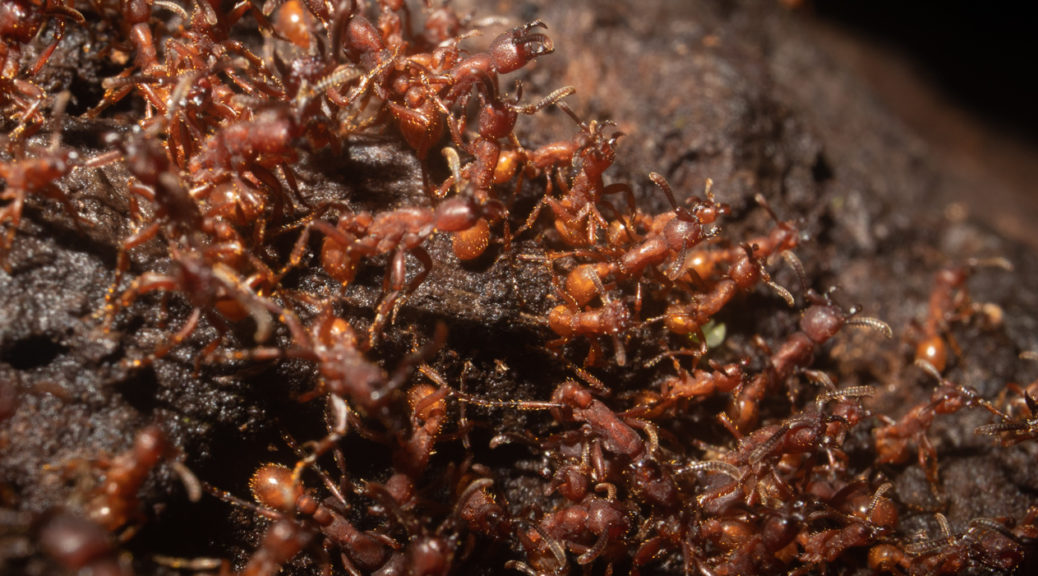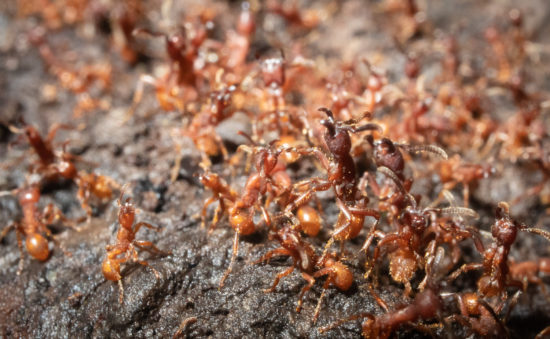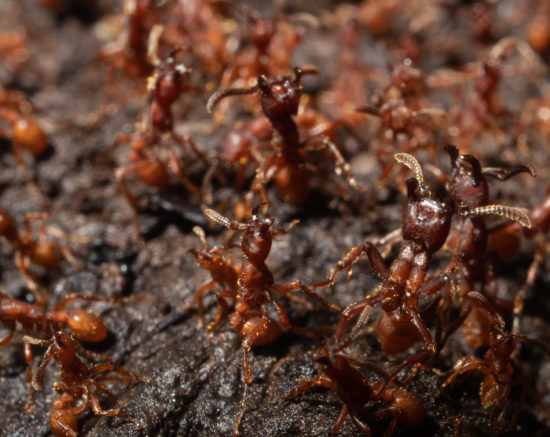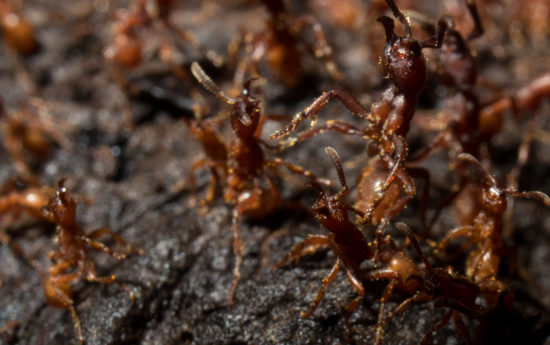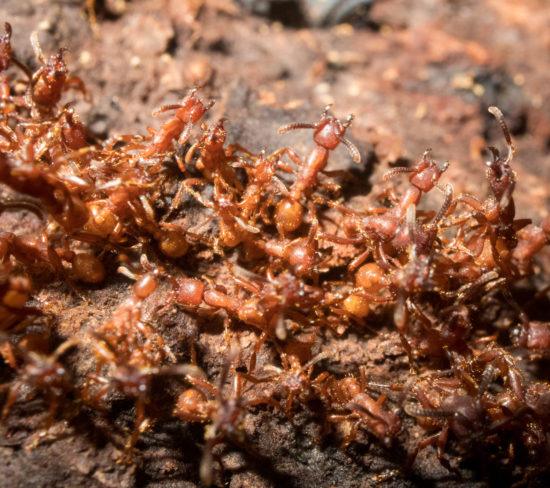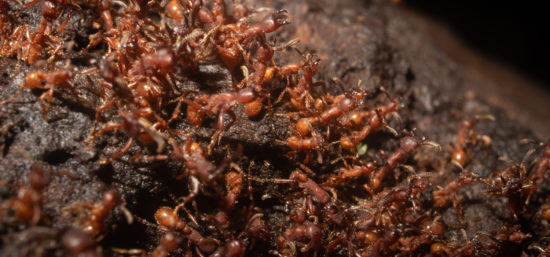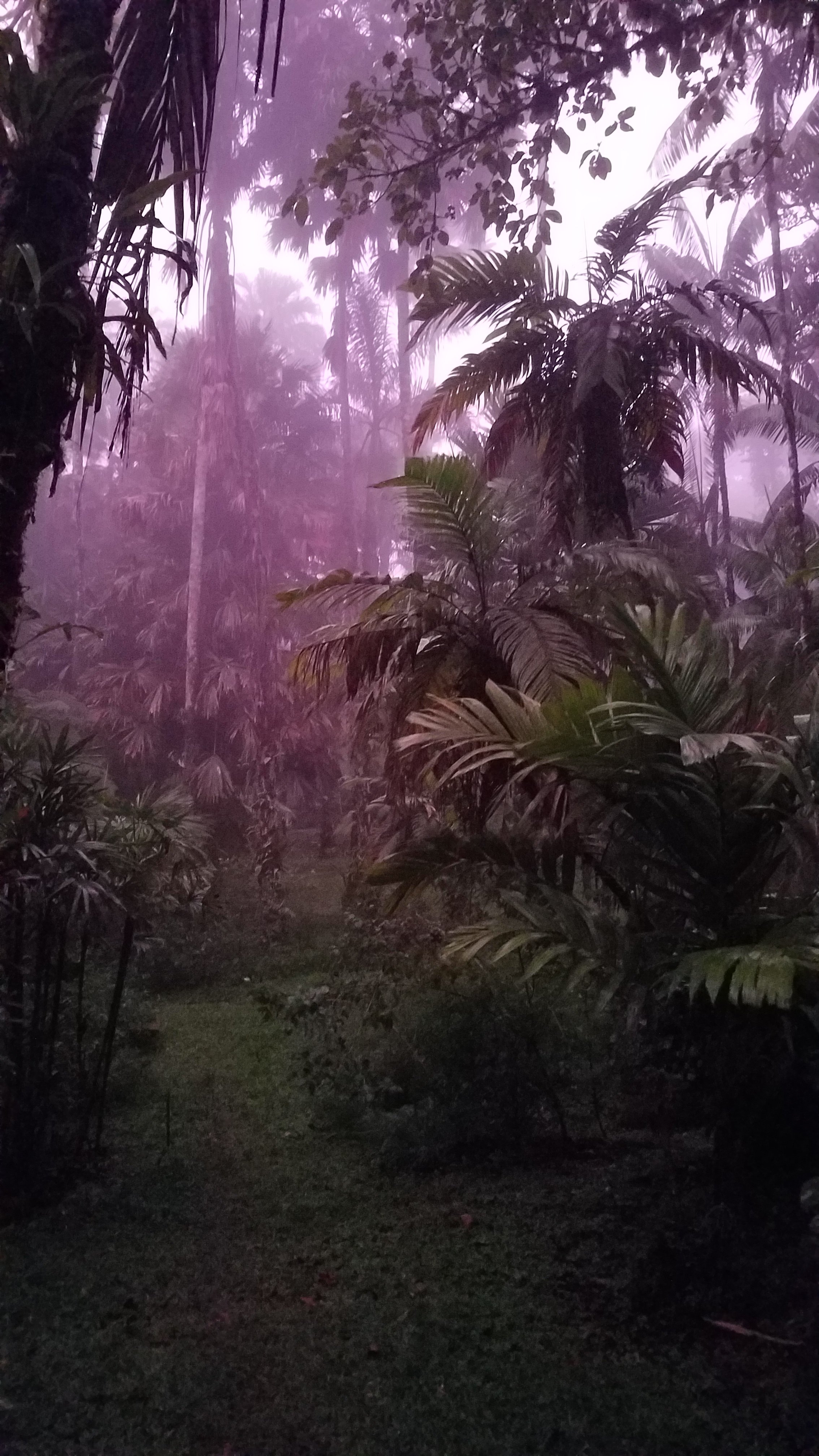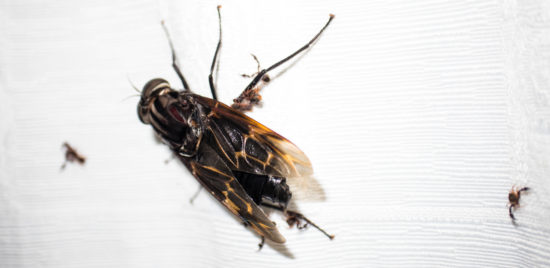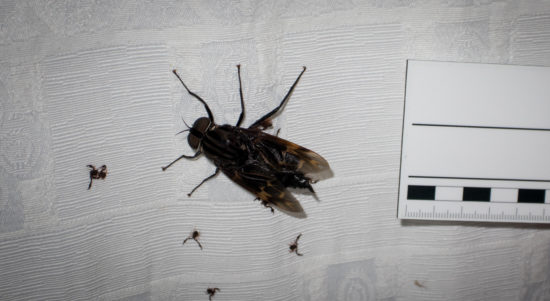Several species of army ants, Ecitoninae, are common in Las Cruces, and there is a convenient picture guide here: http://ants.biology.utah.edu/genusguide/genusguide.html
I think these smaller one are Neivamyrmex—it’s not possible to see their tarsi, which is a critical characteristic in determining genus, but they are certainly smaller and less conspicuous than others I’ve seen. These were moving along a log over Quebrada Culvert.
I’ve observed other Eciton in La Selva and Palo Verde, and these could also be Eciton from the Wilson Botanical Garden.

